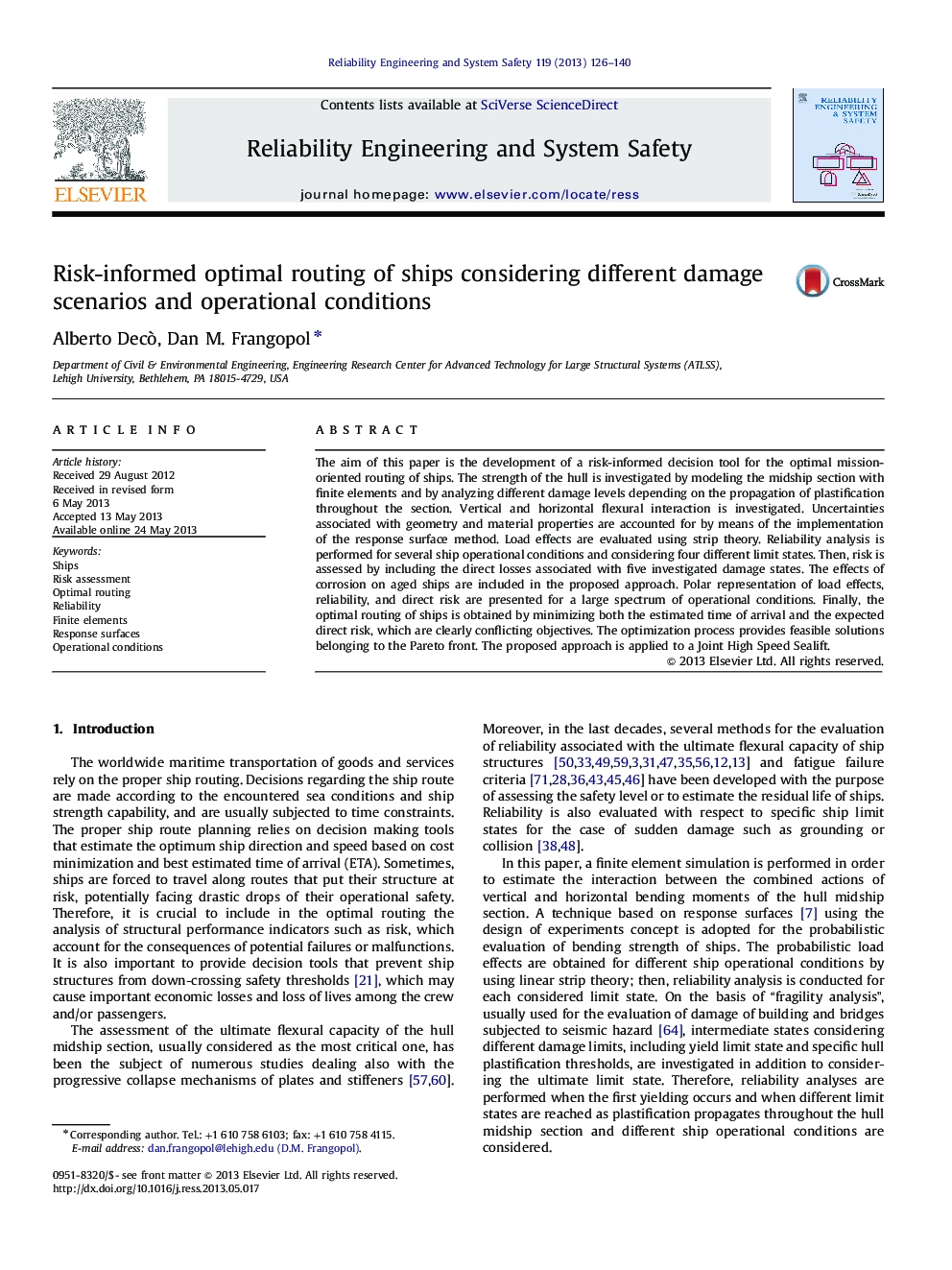| Article ID | Journal | Published Year | Pages | File Type |
|---|---|---|---|---|
| 805651 | Reliability Engineering & System Safety | 2013 | 15 Pages |
The aim of this paper is the development of a risk-informed decision tool for the optimal mission-oriented routing of ships. The strength of the hull is investigated by modeling the midship section with finite elements and by analyzing different damage levels depending on the propagation of plastification throughout the section. Vertical and horizontal flexural interaction is investigated. Uncertainties associated with geometry and material properties are accounted for by means of the implementation of the response surface method. Load effects are evaluated using strip theory. Reliability analysis is performed for several ship operational conditions and considering four different limit states. Then, risk is assessed by including the direct losses associated with five investigated damage states. The effects of corrosion on aged ships are included in the proposed approach. Polar representation of load effects, reliability, and direct risk are presented for a large spectrum of operational conditions. Finally, the optimal routing of ships is obtained by minimizing both the estimated time of arrival and the expected direct risk, which are clearly conflicting objectives. The optimization process provides feasible solutions belonging to the Pareto front. The proposed approach is applied to a Joint High Speed Sealift.
